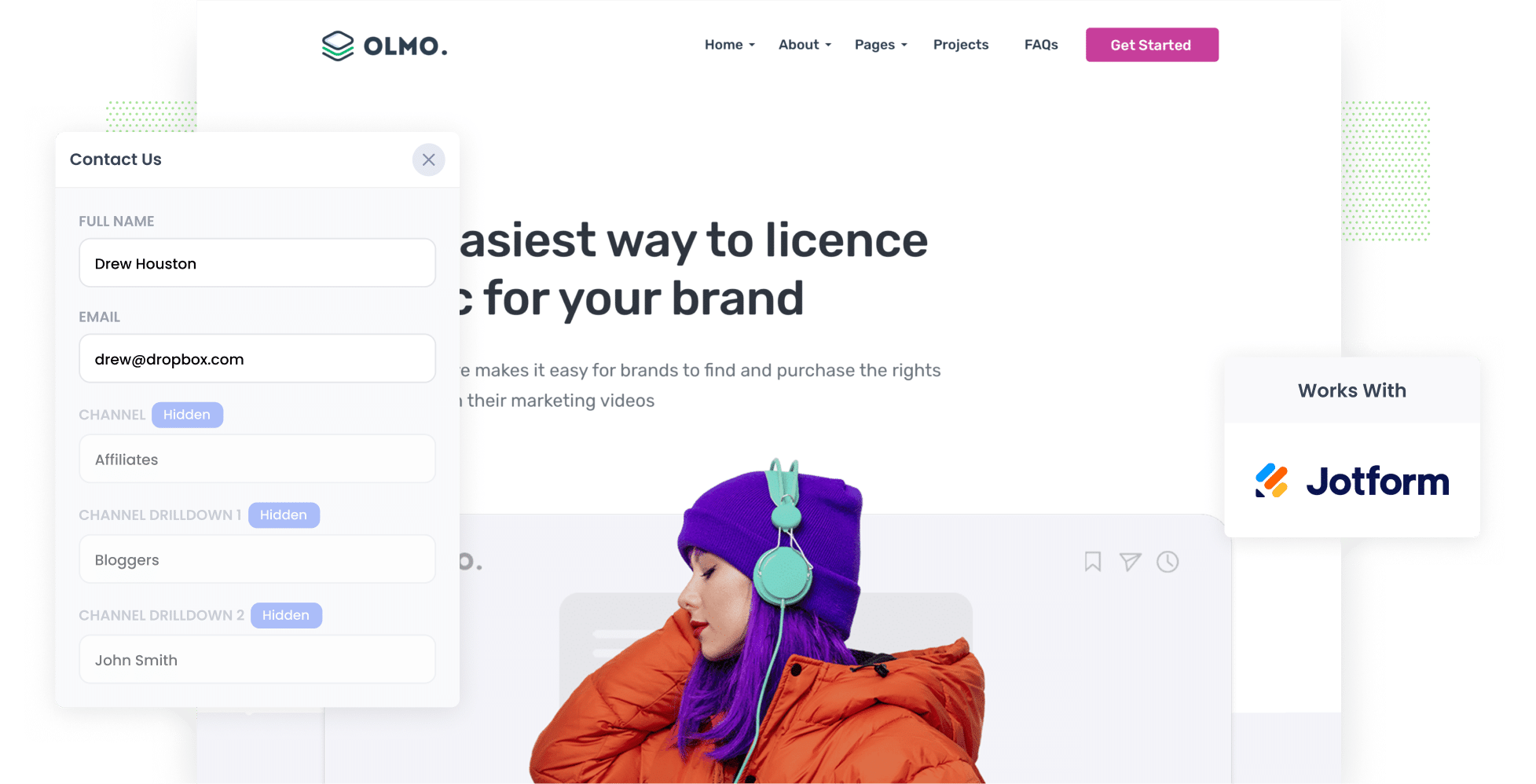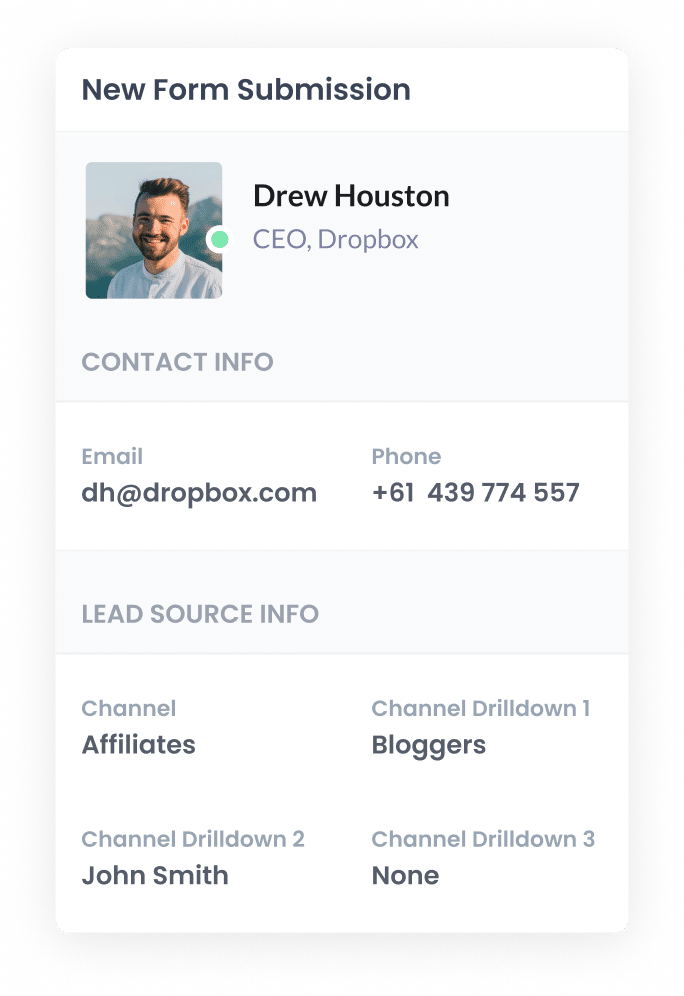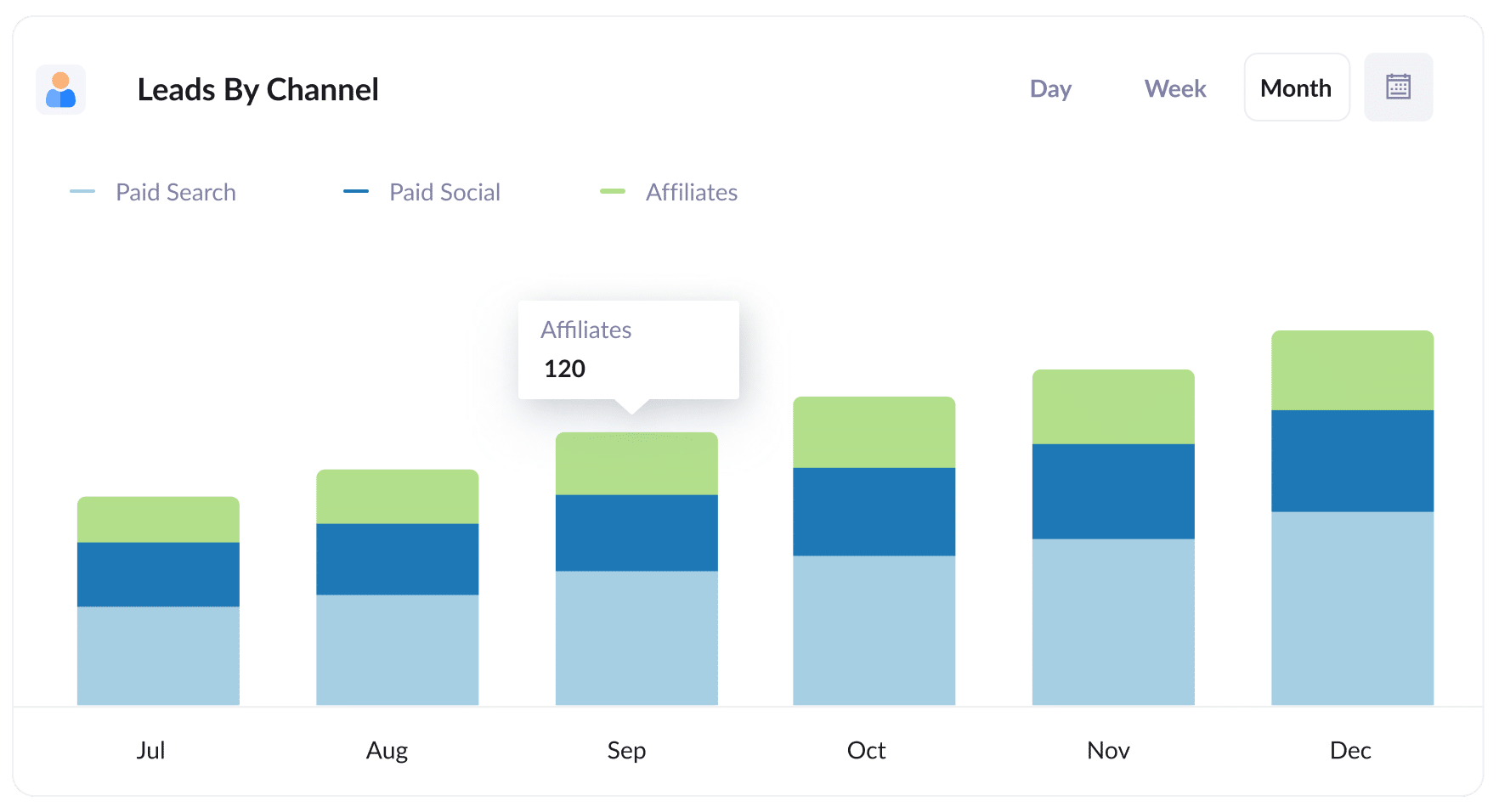How to track leads from Affiliates in Jotform
Learn how to capture Affiliate data with each submission of your Jotform, so you know which affiliates are generating the most leads.

Tracking how many leads & customers you get from your Affiliates can be tricky.
Tools like Google Analytics make it easy to see how many website visitors you get, but they can’t tell you how many leads & customers were generated.
But there is a solution.
In this article, we’ll show you how to use a tool called Attributer to capture affiliates' data in Jotform. We'll also give you a few example reports you can run to show exactly how your affiliate program is performing.
4 simple steps to capture affiliate data in Jotform
Using Attributer with Jotform, you can track how many leads and customers you get from your affiliate program. Here's how it works:
1. Add UTM parameters to your affiliate links

Your first step is to add UTM parameters to the links you give to your affiliates.
So if you want them to send people to attributer.io/integrations/jotform, the link you give should look like this:
attributer.io/integrations/jotfrom?utm_medium=affiliates&utm_source=bloggers&utm_campaign=john-smith
You can customise the information you put in the UTMs based on what information you'd like to capture with each lead, but we'd recommend something like this:
- UTM_Medium = Affiliates
- UTM_Source= Bloggers (or the type of affiliate this is, such as bloggers, podcasters, youtubers, etc.)
- UTM_Campaign= John-Smith (or the name of the specific affiliate)
Programs like Trackdesk or Rewardful can help you automatically add UTM parameters to the links you send to your affiliates, and our free UTM builder can help you create UTM-tagged links.
2. Add hidden fields to your forms

The second step is to add a series of hidden fields to the Jotforms on your website.
The hidden fields you need to add are:
- Channel
- Channel Drilldown 1
- Channel Drilldown 2
- Channel Drilldown 3
- Landing Page
- Landing Page Group
Jotfrom makes this simple to do; our step-by-step instructions are available here.
3. Attributer writes the affiliate data into the hidden fields

When a user visits your website through one of your affiliate links that have UTM parameters, Attributer starts to work. It can collect and save those details right in the visitor’s browser, ensuring that if they check out more of your site or leave your website and return later, all those UTM parameters from their first visit will still be captured.
Then when a user fills out a form on your website, Attributer automatically writes the affiliate information from those UTM parameters to the hidden fields in the form.
4. Affiliate data is captured by Jotform

Finally, when the user submits the form on your website, the affiliate data that Attributer wrote into the hidden fields is captured in Jotform (alongside the information the lead entered into the form, like their name, email, etc.)
What you can do with the data
Now that Jotform is capturing the Affiliate data, what can you do with it? Here are some examples for you to put it to use:
- Send it to your CRM: You can send the data into your CRM —whether it's Salesforce, Hubspot, Pipedrive, or others. This allows you to generate reports that show the number of leads you got from your affiliate program, the conversion rates into customer, how much revenue your affiliates have generated, and more. This approach not only provides a clearer picture of your affiliate program's performance but also equips you to make informed decisions that drive success.
- Export it to a spreadsheet: By utilizing Jotform's native Google Sheets integration, you can send the affiliate data to a sheet. And once it's in there, you can build basic charts & graphs in the sheet or connect analytics tools like Looker Studio (formerly Google Data Studio) to build ore advanced charts & dashboards.
- Add it to your email notifications: If you prefer not to use a CRM, you can add the affiliate data to the email notifications that Jotform sends.
Why use Attributer?
Here are some reasons why Attributer is the best way to capture affiliate data in Jotform :
- Captures other attribution data - Attributer also provides information on leads that come from other sources, including Paid Search, Paid Social, Organic Social, and Organic Search. This means you’ll get a clear picture of where ALL your leads and customers are coming from, helping you see how well each channel works for you.
- Remembers the data - Attributer stores the UTM parameters in the visitor's browser, so even if they browse around your site before completing a form (or leave and come back later), the affiliate data you put in the UTMs will be passed through.
- Captures landing page data - Attributer also captures the landing page URLs (like https://attributer.io/blog/best-jotform-addons) and landing page group (such as /blog). With this data, you can run reports that show how many leads and customers you're getting from your content (I.e. your blog)
3 example reports you can run when you capture affiliate data in Jotform
By capturing affiliate data with each submission of your Jotform forms and then sending it to a CRM or reporting tool, you can generate various reports that show how your affiliate program is performing.
To help you get started, I have included below three example reports that I have found useful over the years:
1. Leads by Channel

Attributer provides information on the source of ALL your leads, not just those from your affiliate program. This allows you to generate reports (like the one above) that show how many leads you get from each channel (I.e. Paid Search, Paid Social, Affiliates, Organic Search, Organic Social, etc).
By examining this information, you can get a better idea of how your affiliate program compares to other strategies, such as Paid Search Ads and SEO efforts.
2. Customers by Affiliate Type

This reports how many new customers have been generated from your affiliate program, broken down by the type of affiliate (bloggers, YouTubers, podcasters, etc) that generated them.
This report can help you identify which type of affiliates are performing best and allows you to make more strategic decisions about how to grow it.
For instance, if you notice bloggers bringing in the most leads and customers, it might be wise to focus on attracting more of them to your program.
3. Revenue by Affiliate

This table shows you how many new customers, and how much revenue, has been generated by each affiliate.
By understanding who your top-performing affiliates are, you can focus your efforts where they count the most and spend less time on partnerships that aren’t delivering as much value.
Wrap Up
If you've been looking for a way to capture affiliate data with each submission of your Jotforms, then Attributer could be the answer.
You can then send this data to your CRM and create reports that help answer questions like:
- How many new customers are coming from bloggers vs podcasters?
- How much revenue is being generated by each affiliate?
- What is the lead-to-customer conversion rate of leads that come from our affiliate program?
- What is the average deal size of customers from our affiliate program compared to customers from our Google or Facebook Ads?
Best of all, it’s free to get started with Attributer and usually takes less than 10 minutes to set up. So start your 14-day free trial today!
Get Started For Free
Start your 14-day free trial of Attributer today!

About the Author
Aaron Beashel is the founder of Attributer and has over 15 years of experience in marketing & analytics. He is a recognized expert in the subject and has written articles for leading websites such as Hubspot, Zapier, Search Engine Journal, Buffer, Unbounce & more. Learn more about Aaron here.
